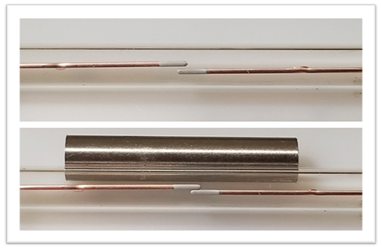Technical Help: Reed Switch Information
Throughout the Gems catalog and website, you will see switch ratings listed under the electrical specifications, in the How to Order sections, or they may simply appear in the product notes.

What is Volt-Ampere (Volt-Amp)?
The Volt-Ampere (or Volt-Amp) rating, shown as VA, is used when sizing your switch for your application. Switches for Gems products range from 10 VA to 100 VA. Proper VA selection is necessary to protect your switch from damage, ensure consistent operation, and to extend the life-cycle of the switch. Choosing the appropriate maximum VA switch rating is also necessary when UL tested voltage and current values (resistive loads) need to be considered.
Gems reed switches are dry-contact and magnetically actuated. They don’t require any power to operate, but it is important to pay attention to the VA rating for the voltage and current that will be traveling through the components that make up the switch.

Breakdown and wear over time, or immediate damage can occur if these values are exceeded. In-rush current, over-current, and over-voltage (arcing) can cause this by welding the contacts closed. Distance between the contacts and the contact material are some factors that determine VA rating and resilience to these types of damage.
How to figure out your requires Volt-Amps:
So, now you know what VA is and why it is important for switch selection, but how do you apply it to your application? To figure for Volt-Amps, the following simple equation is used:
S(VA) = I(A) * V(V)
Volt-Amps (VA)are equal to the current (A) times the voltage (V).
Therefore, if you already know the VA, you can figure for current:
I(A)= S(VA)÷ V(V)
Current (A)is equal to Volt-Amps (VA) divided by voltage (V).
Practical example: Once you have chosen the voltage needed (e.g. 120 VAC) and the switch rating (e.g. 20 VA), then you can determine the maximum allowable current:
(A) = 20 ÷ 120
0.17 = 20 ÷ 120 (0.1666 rounded up)
When configuring your electrical circuit for the example above, you should make sure there is no more than 0.17 amps (170 mA) traveling through the switch.
Additional circuit protection is recommended. You can read about it HERE.
